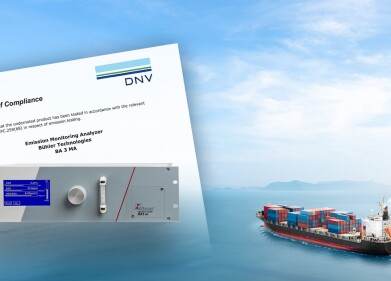Measurement and testing
What is the Cetane Index?
May 15 2015
The cetane index is a figure which denotes the quality of a diesel fuel, based upon its density and volatility, and which is roughly approximate to its cetane number. It is loosely linked to the octane number of gasoline, since both give a measure of each substance’s efficacy and are inversely related. Feeds which give off high octane numbers generally give off low cetane index light cycle oils (LCOs), and improving the octane number of a substance will have a similarly beneficial effect on its cetane index, too.
However, the two measurements do differ in what it is they exactly correspond to. Whereas the octane number quantifies how long it takes before the gas can resist auto-ignition, the cetane index refers to how quickly it can become ignited inside a compression setting.
Therefore, a higher cetane index generally indicates that the fuel will combust more quickly in the engine. This doesn’t necessarily guarantee better efficiency, but it should indicate a quieter and more smoothly-running engine. It can also mean that there will be less harmful emissions from the exhaust pipe (thus helping the environment), and less wear and tear on the inner components of the car such as its battery, engine and other parts, due to an increased rate of the distribution of lubricants.
How to Achieve a Higher Cetane Index
There are two principle ways in which cetane indexes can be improved. These are as follows:
- Hydro-treatment. Treating the fuel with hydrogen during the refinery process is one way of raising the cetane index – but is not without its drawbacks. On the one hand, hydrogen is an expensive and increasingly rare commodity, making the process unattractive from a business point of view. Furthermore, hydro-treatment generally results in less powerful and less efficient fuel, as well.
- Additives. Substances such as di-tert-butyl peroxide and alkyl nitrates can be used to artificially increase the cetane index. Many additives are quick to decompose in the compression setting of an engine, thus leading to the production of free radicals, which heighten chain reaction initiation performance and thus improve fuel quality.
There are several ways of checking and improving upon the cetane index of fuels in order to attempt to raise the standard of their performance in an industrial and commercial setting. The article NextGen Derived Cetane Analysis Enables Refineries to Save on Maintenance Operations Costs talks about how improved efficacy of the fuels, due to a higher cetane index, can benefit companies in the long run. It also discusses the various methods of analysing the fuel’s performance in more detail, too.
Digital Edition
PIN 26.1 Feb/Mar 2025
March 2025
Analytical Instrumentation - Elemental Analysis for Quality and Process Control at Refineries, for Lubricants and Wear Metals in Engine Oils - Synthetic Lubricants: New Developments - Scaling...
View all digital editions
Events
Apr 08 2025 Birmingham, UK
Apr 08 2025 Kielce, Poland
Apr 08 2025 Ravenna, Italy
Apr 08 2025 Southampton, UK
Apr 08 2025 London, UK



















